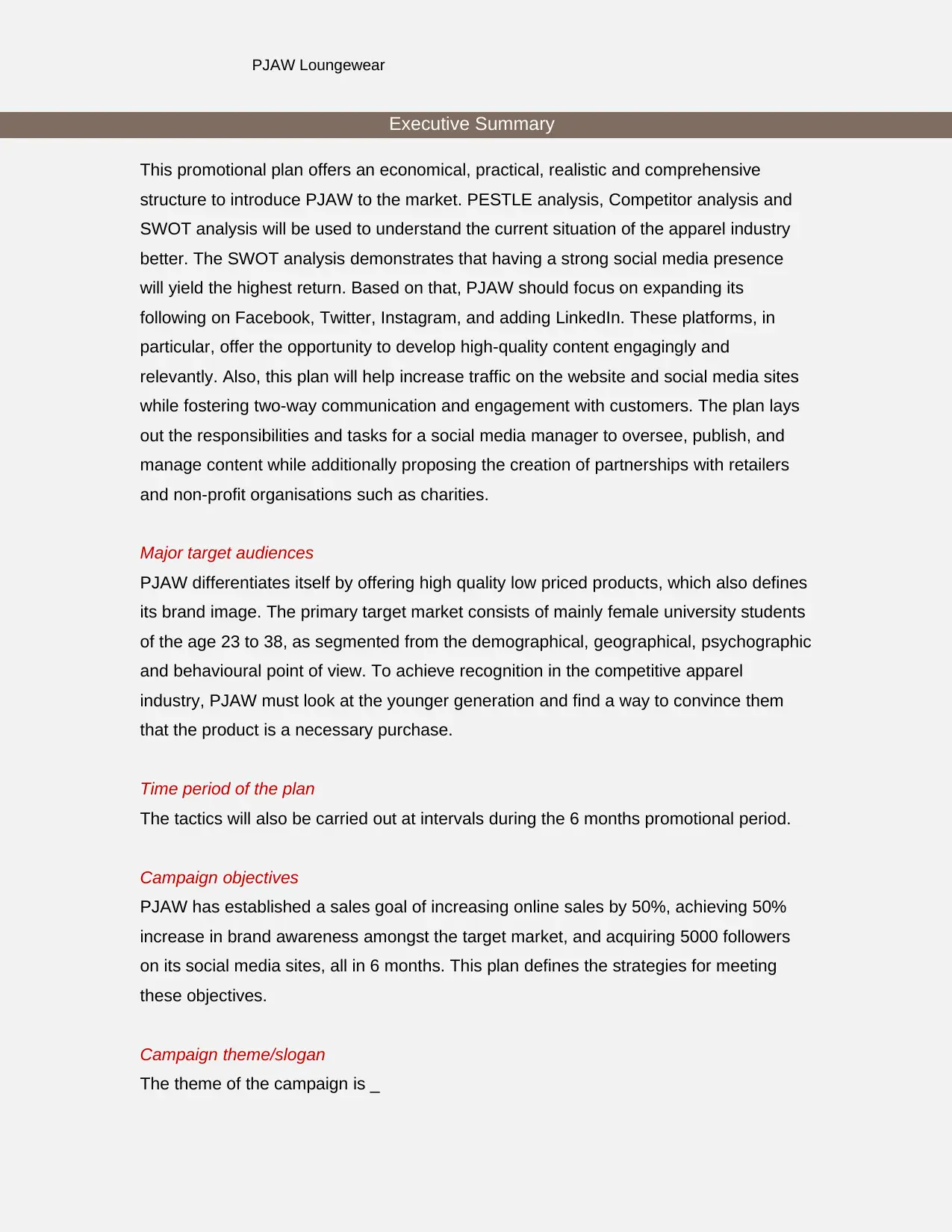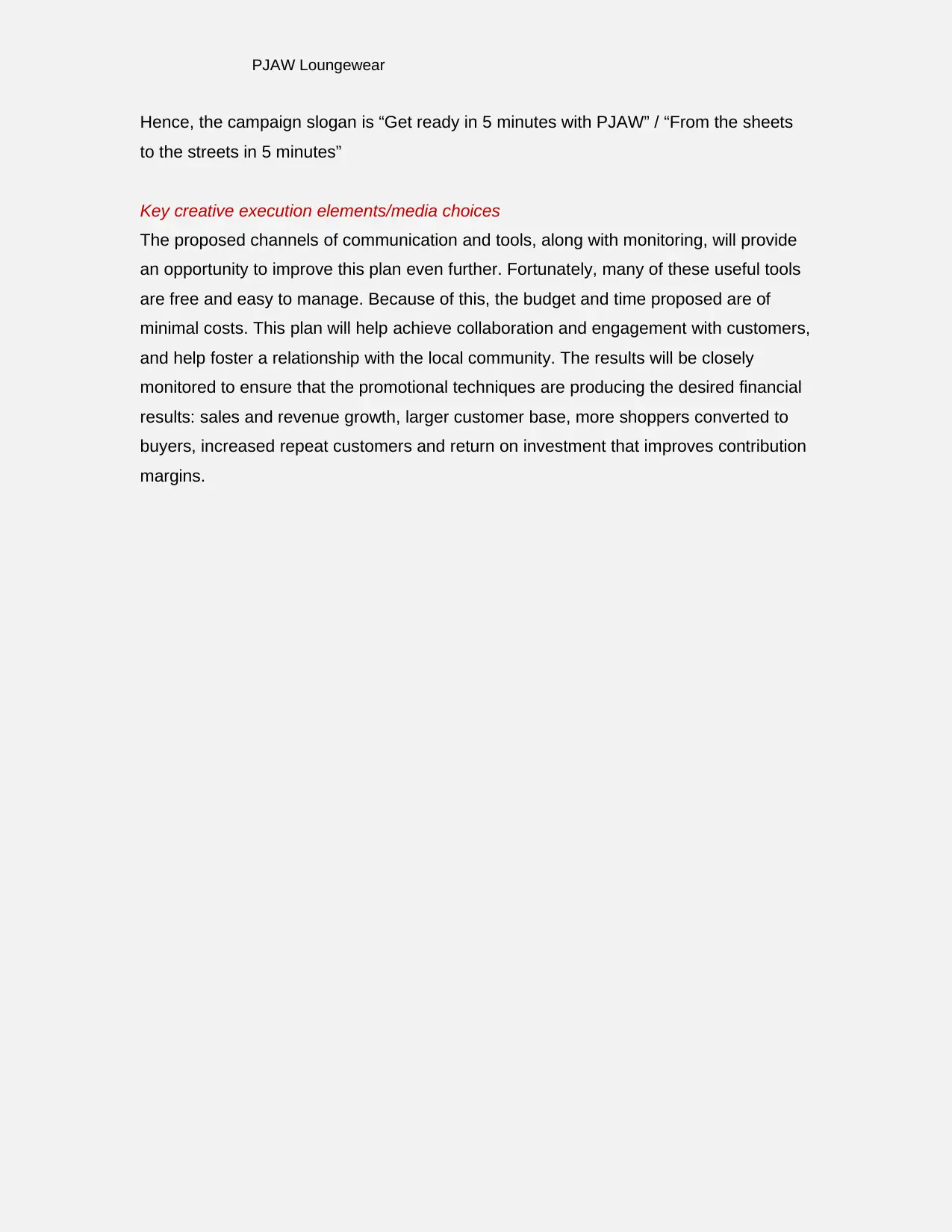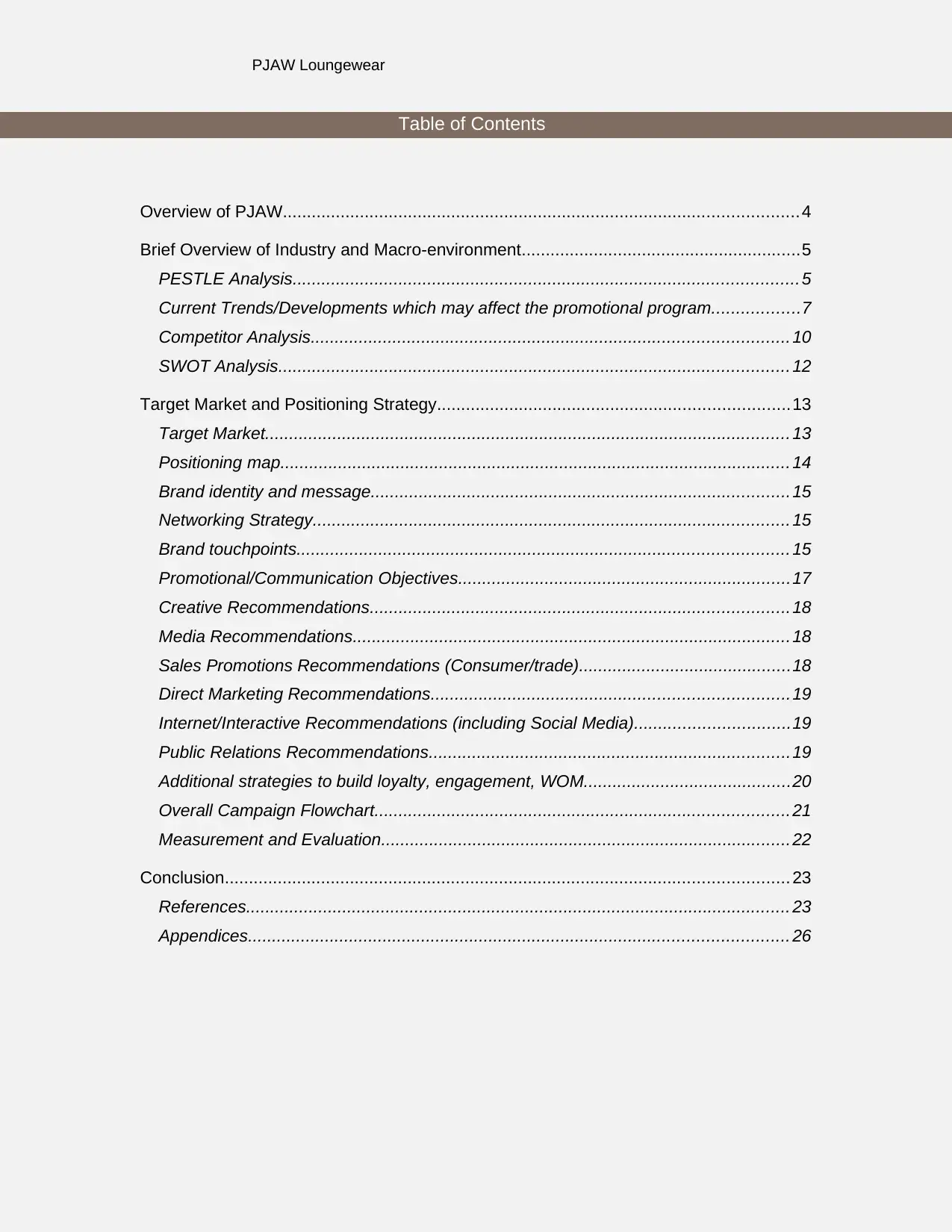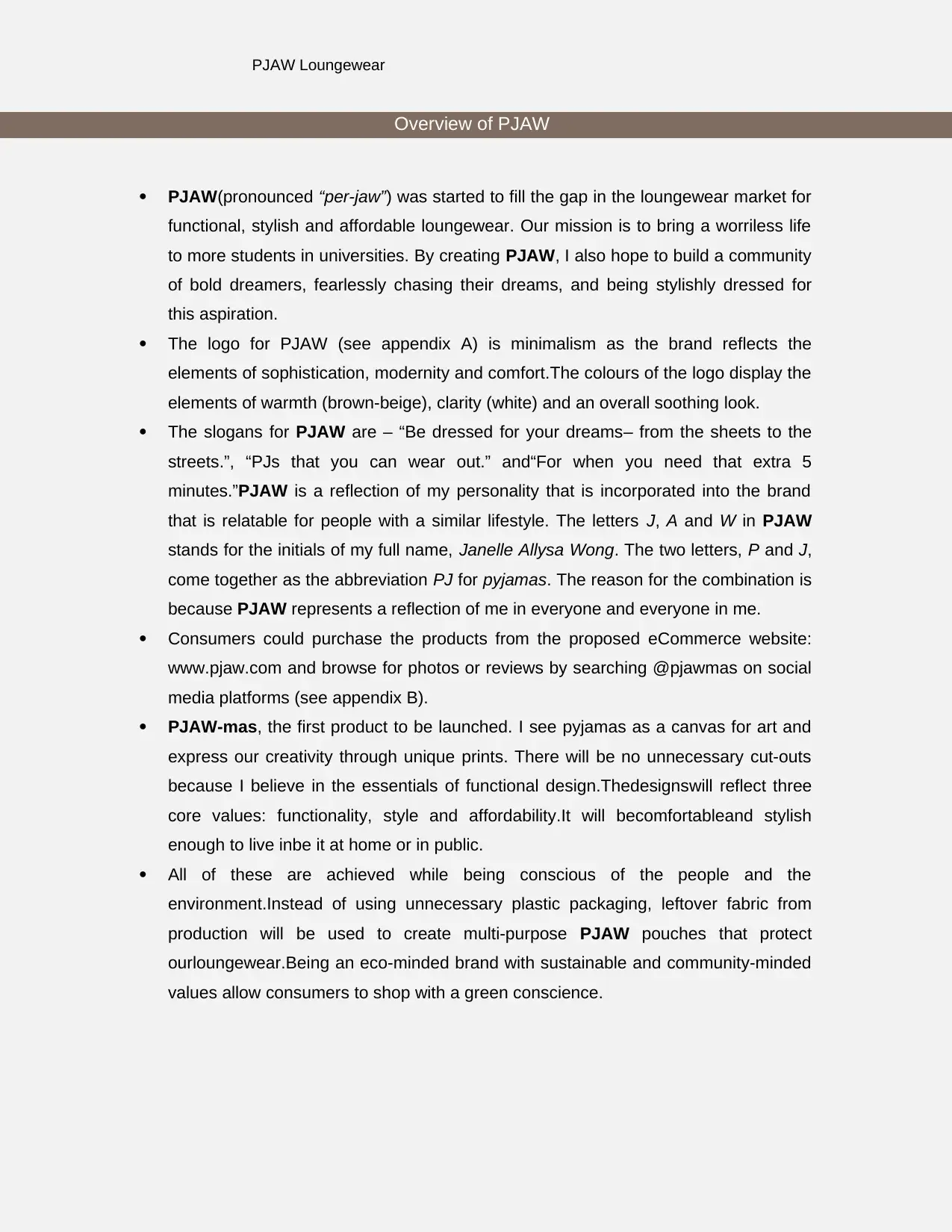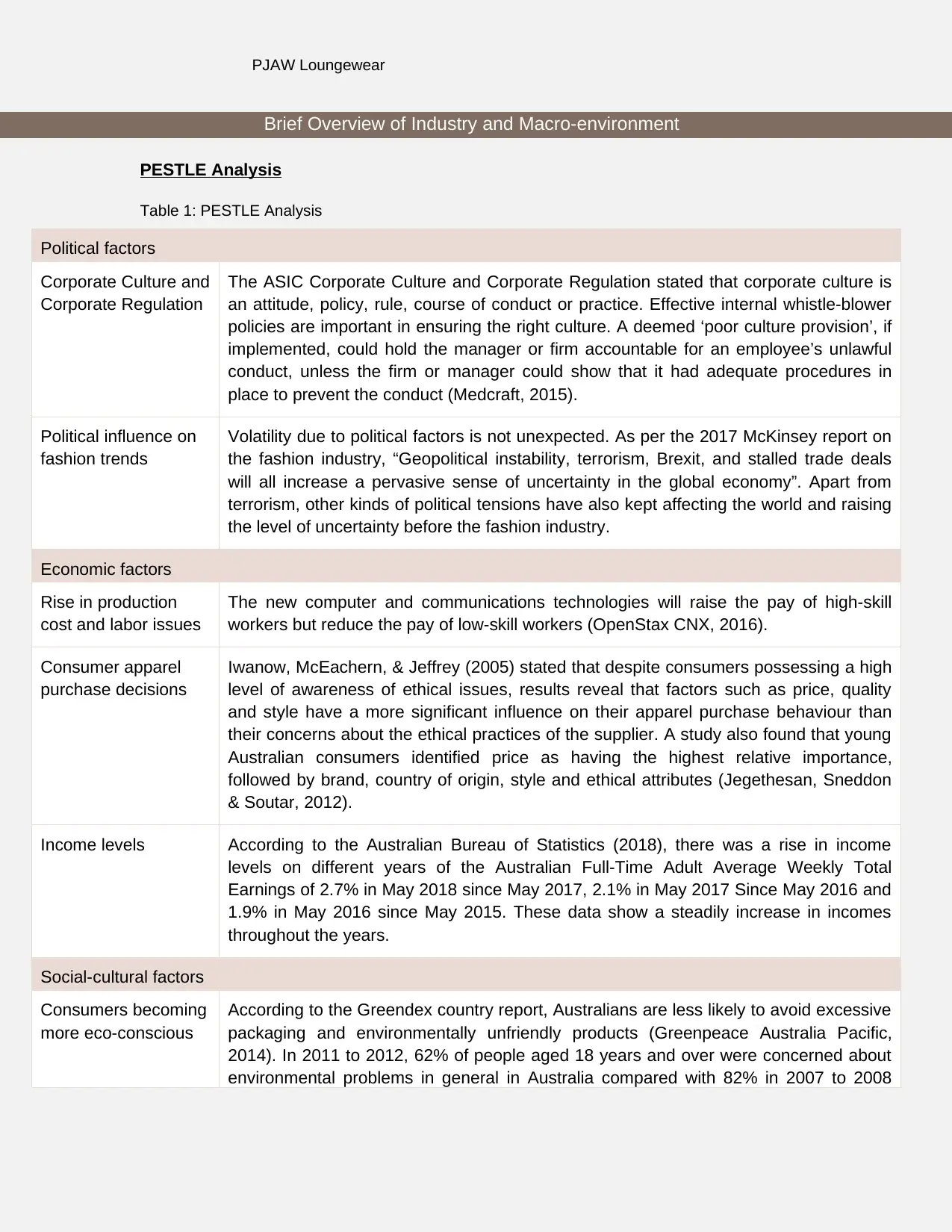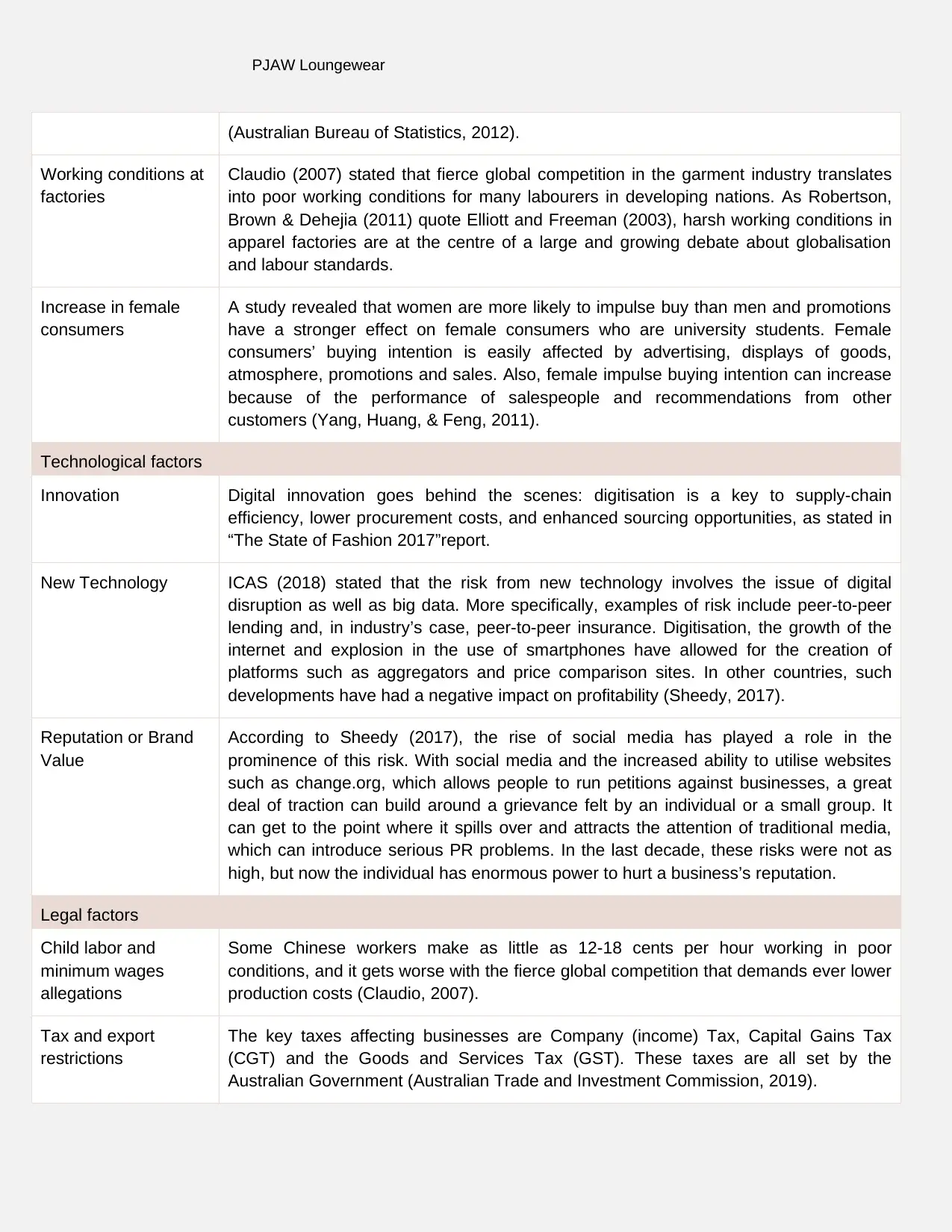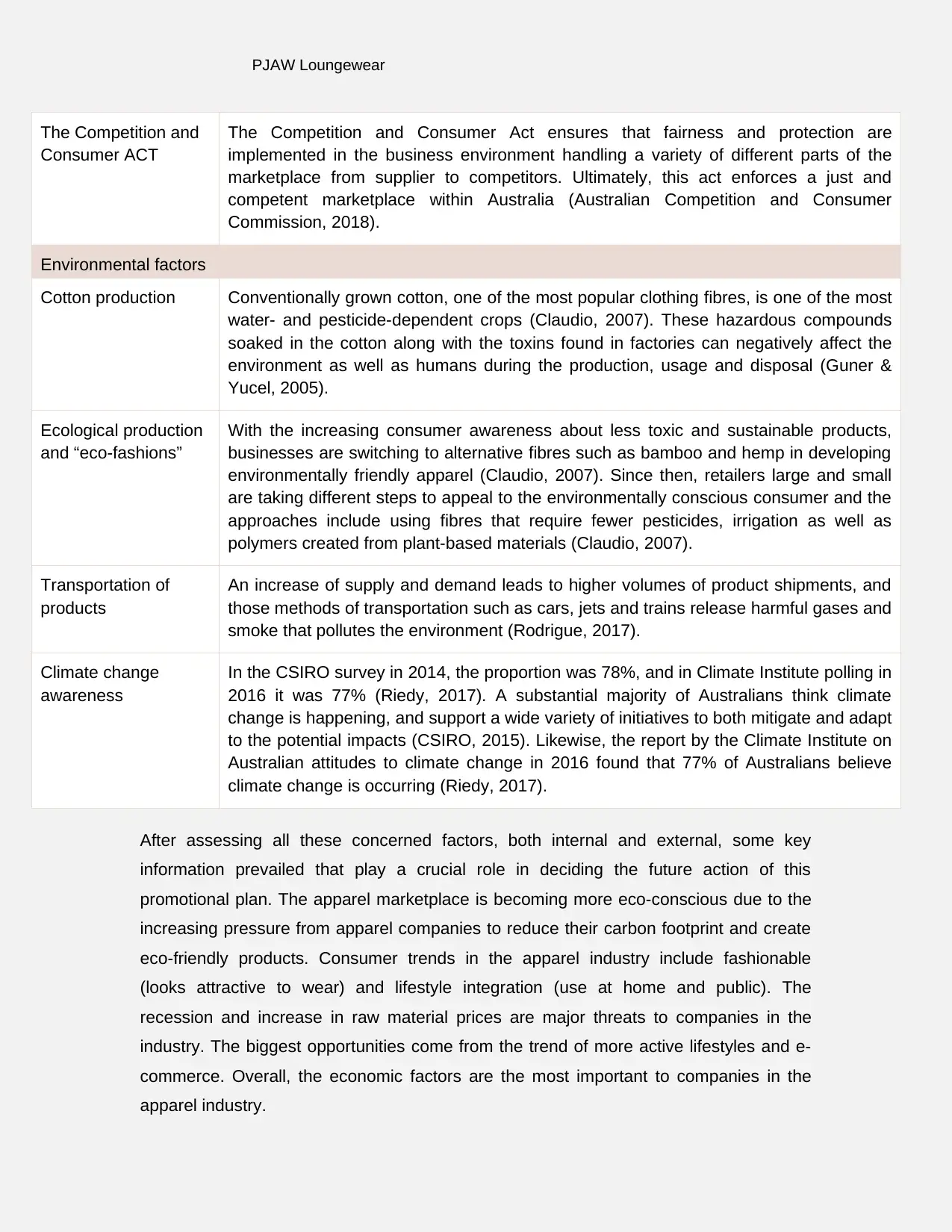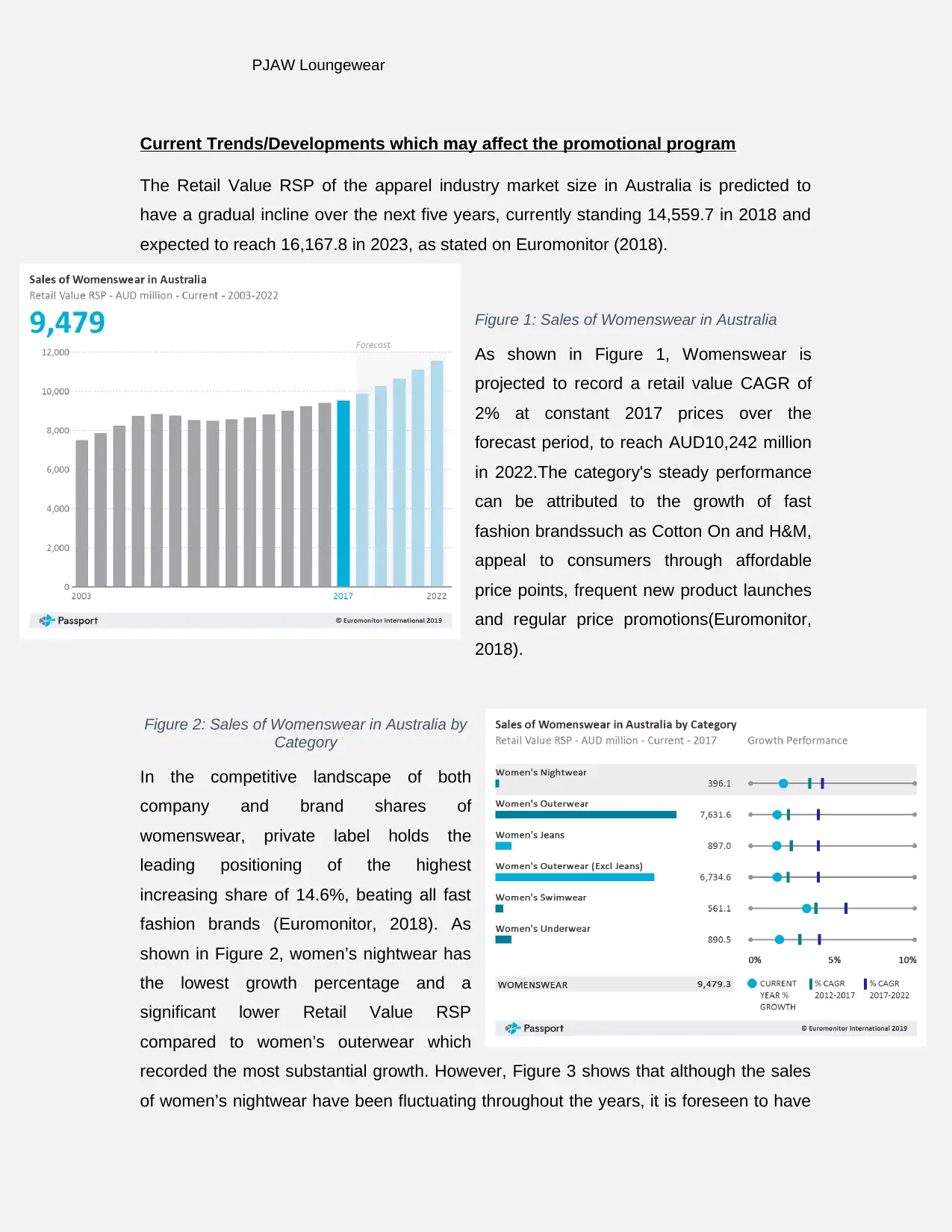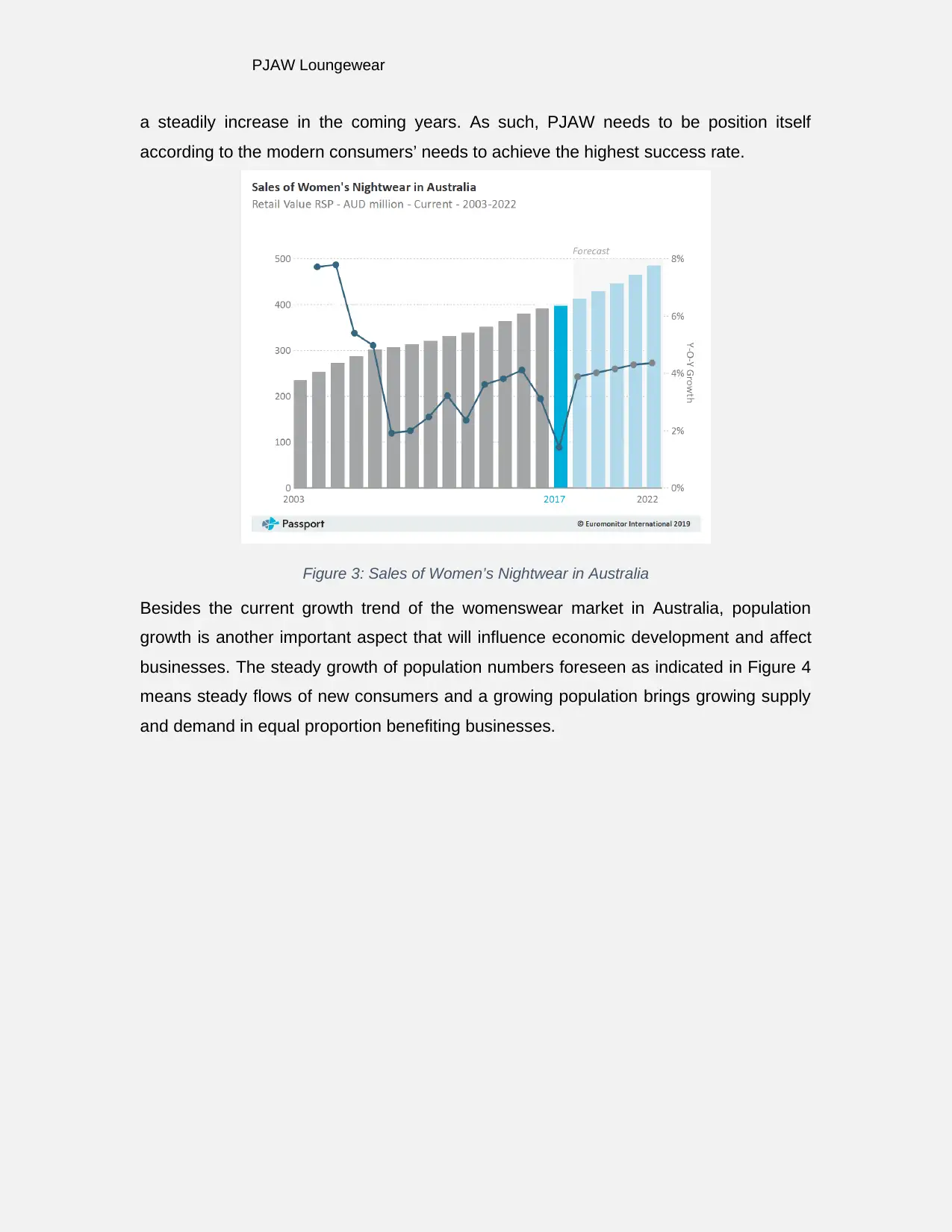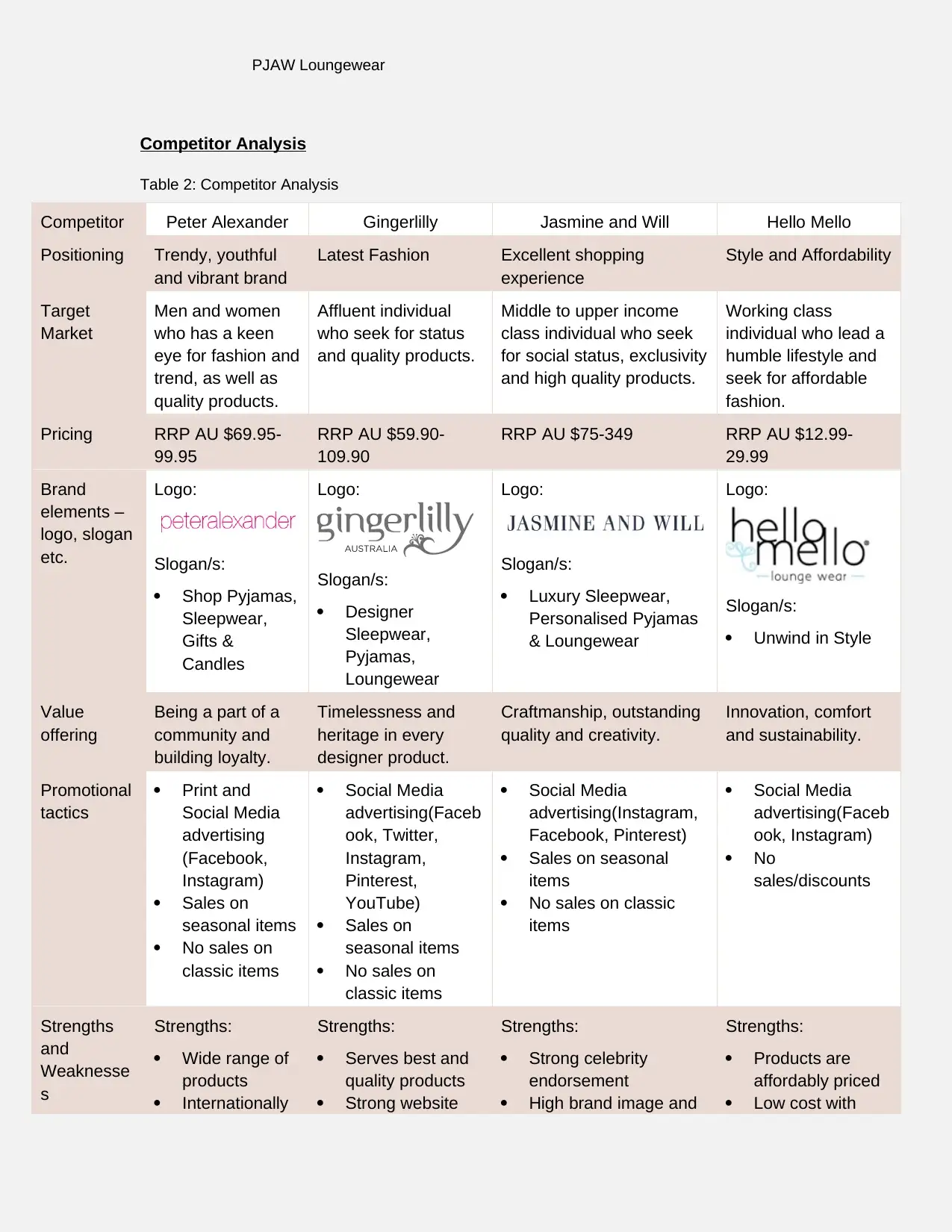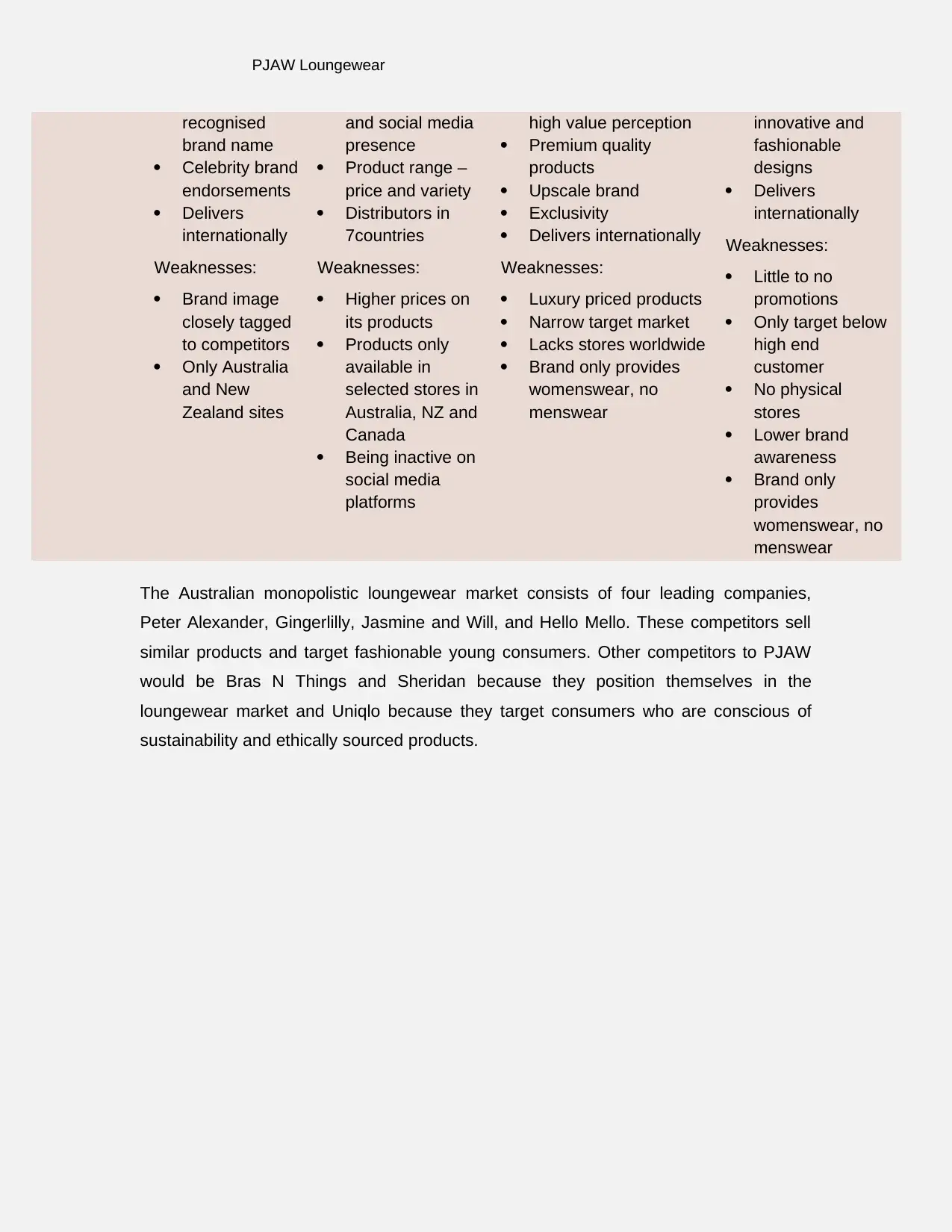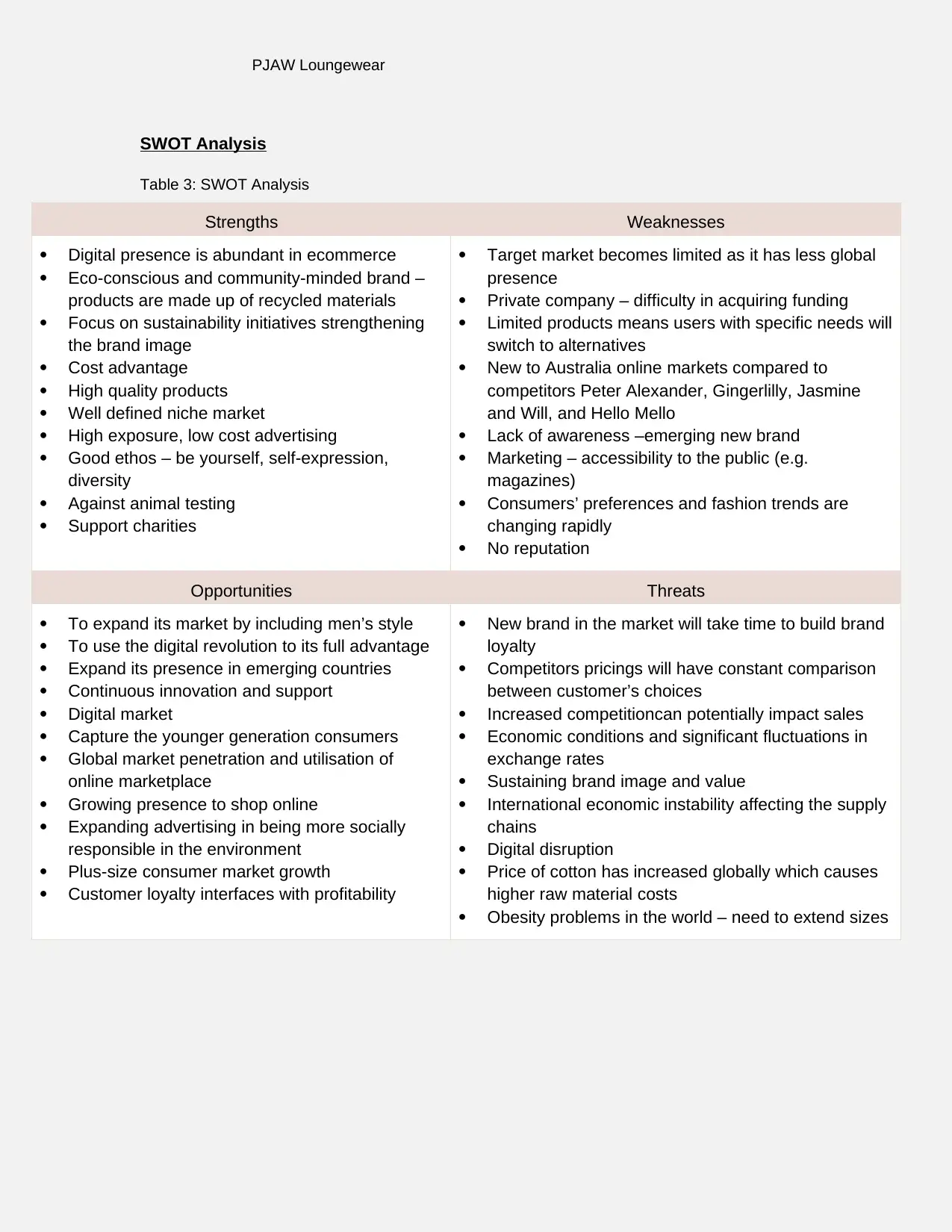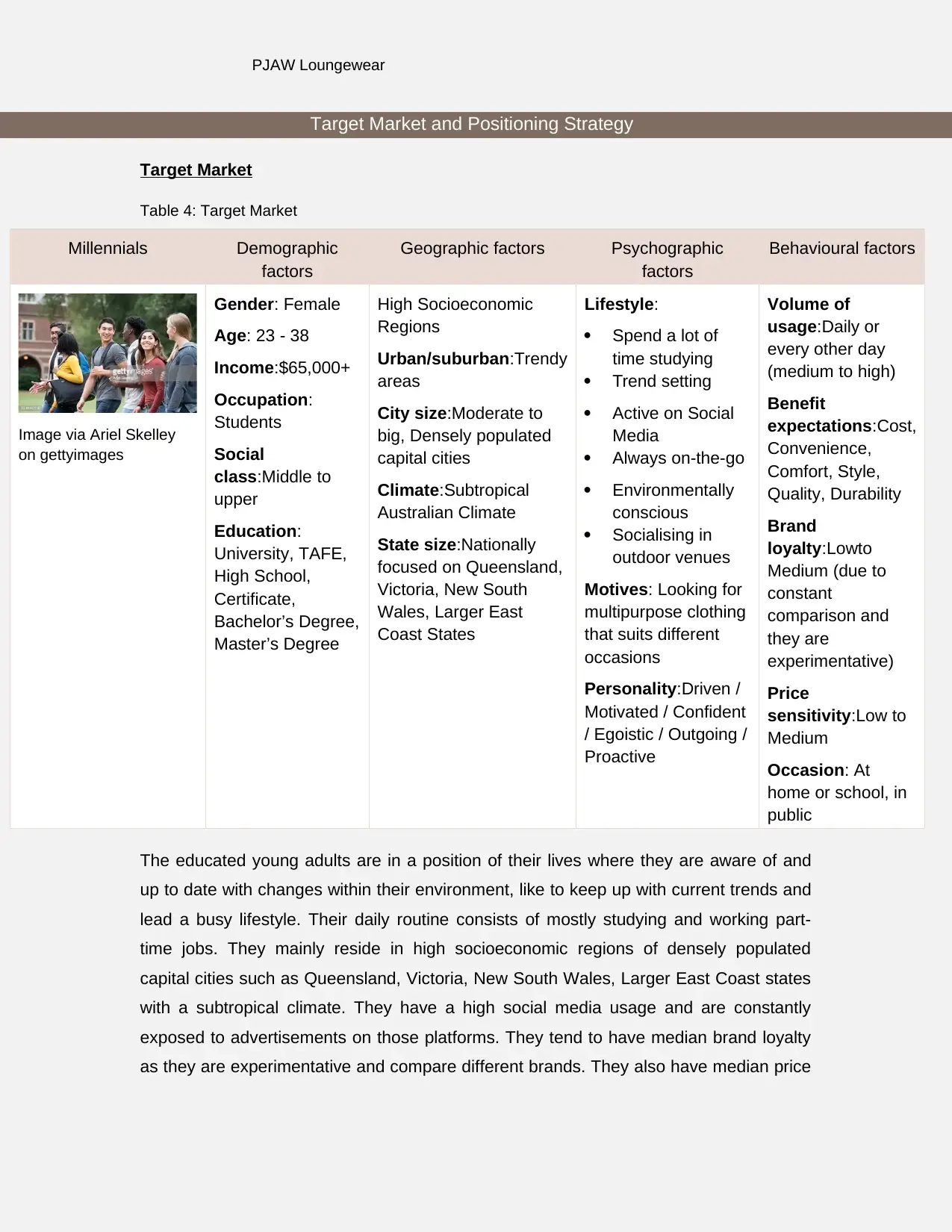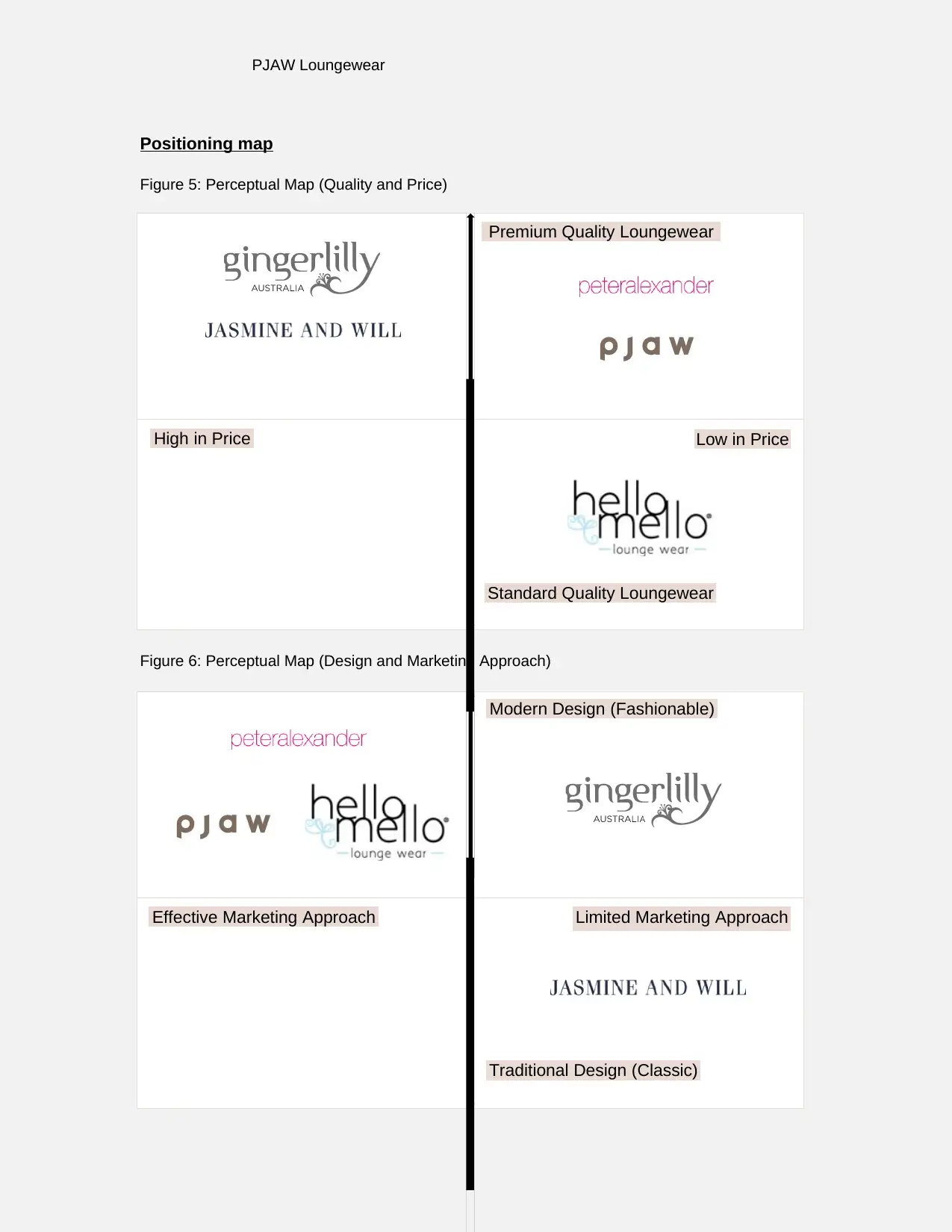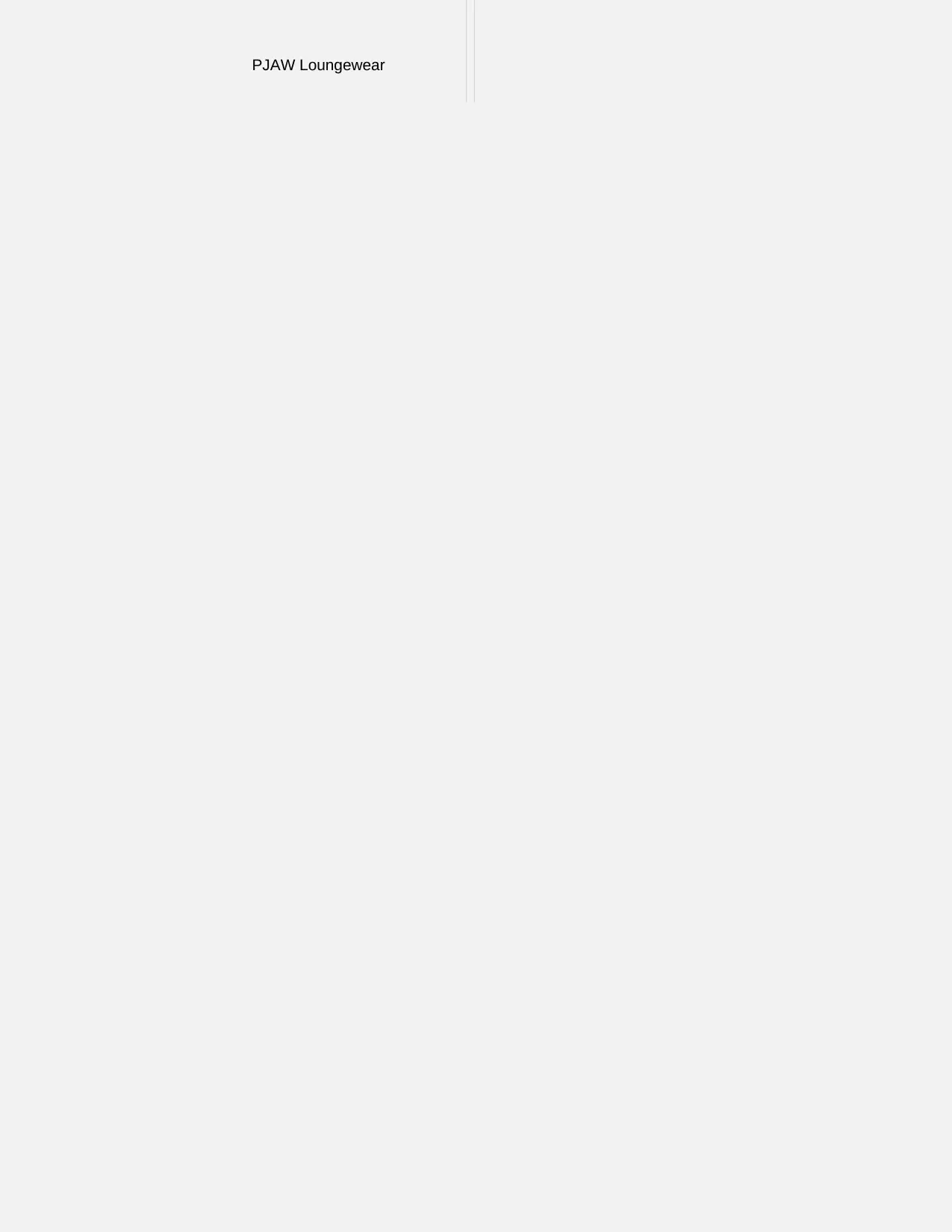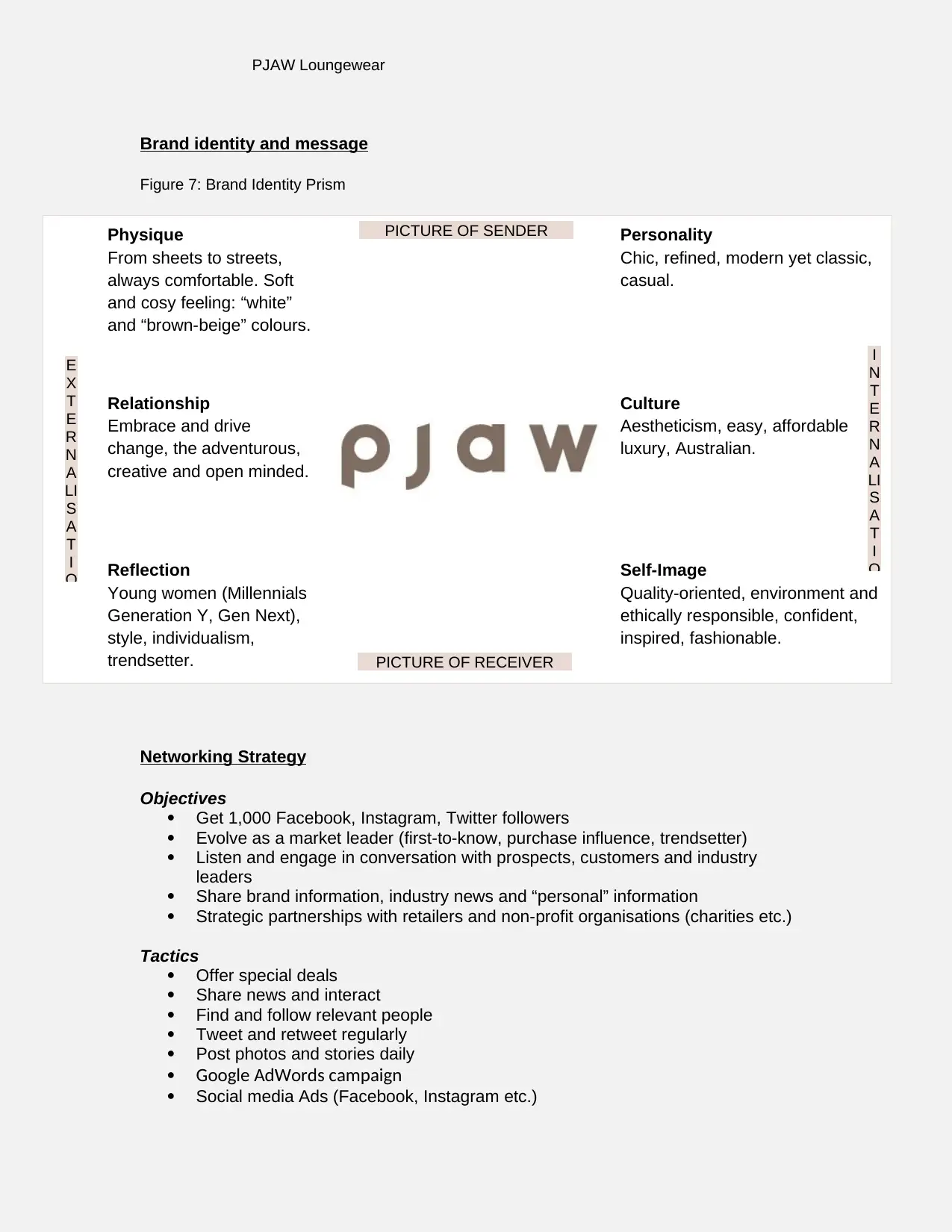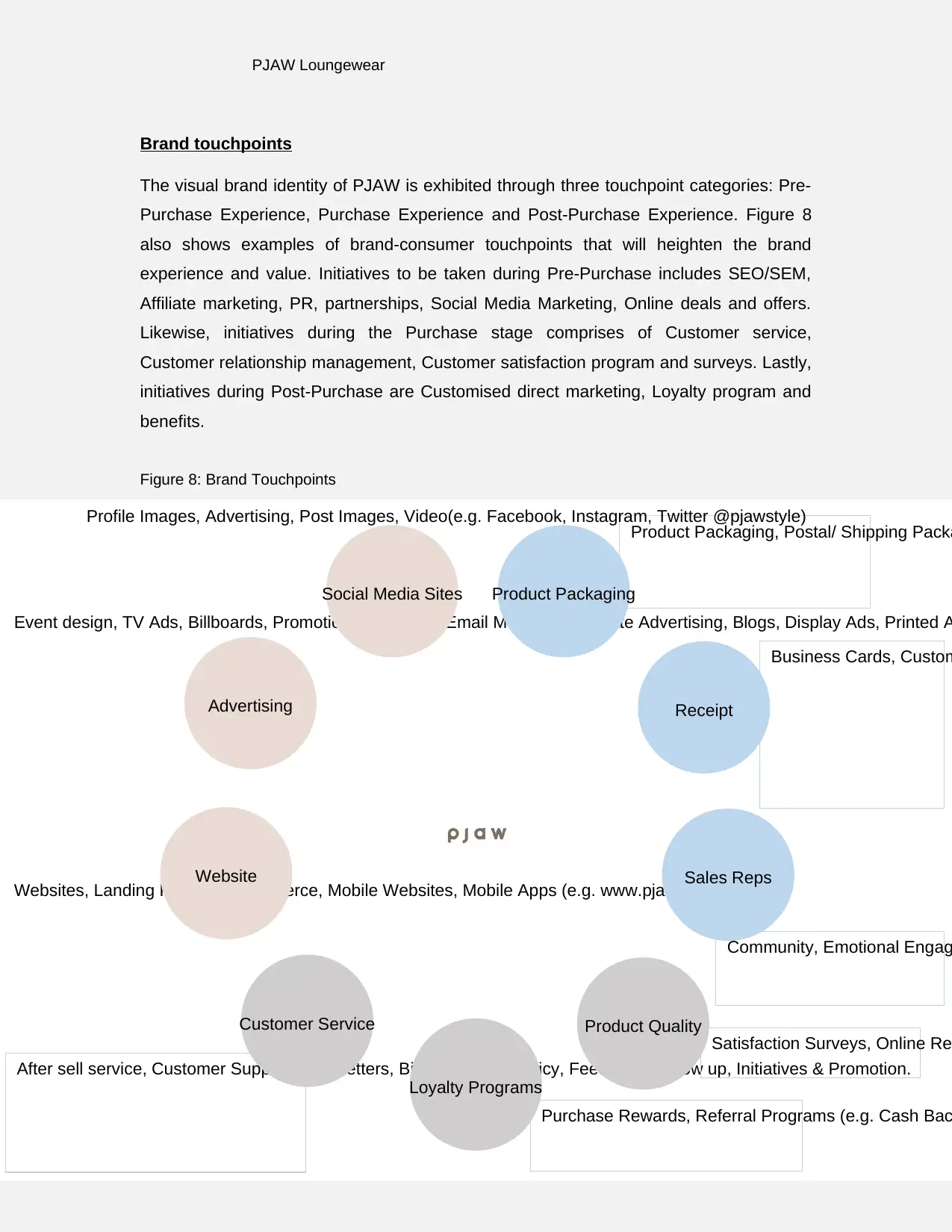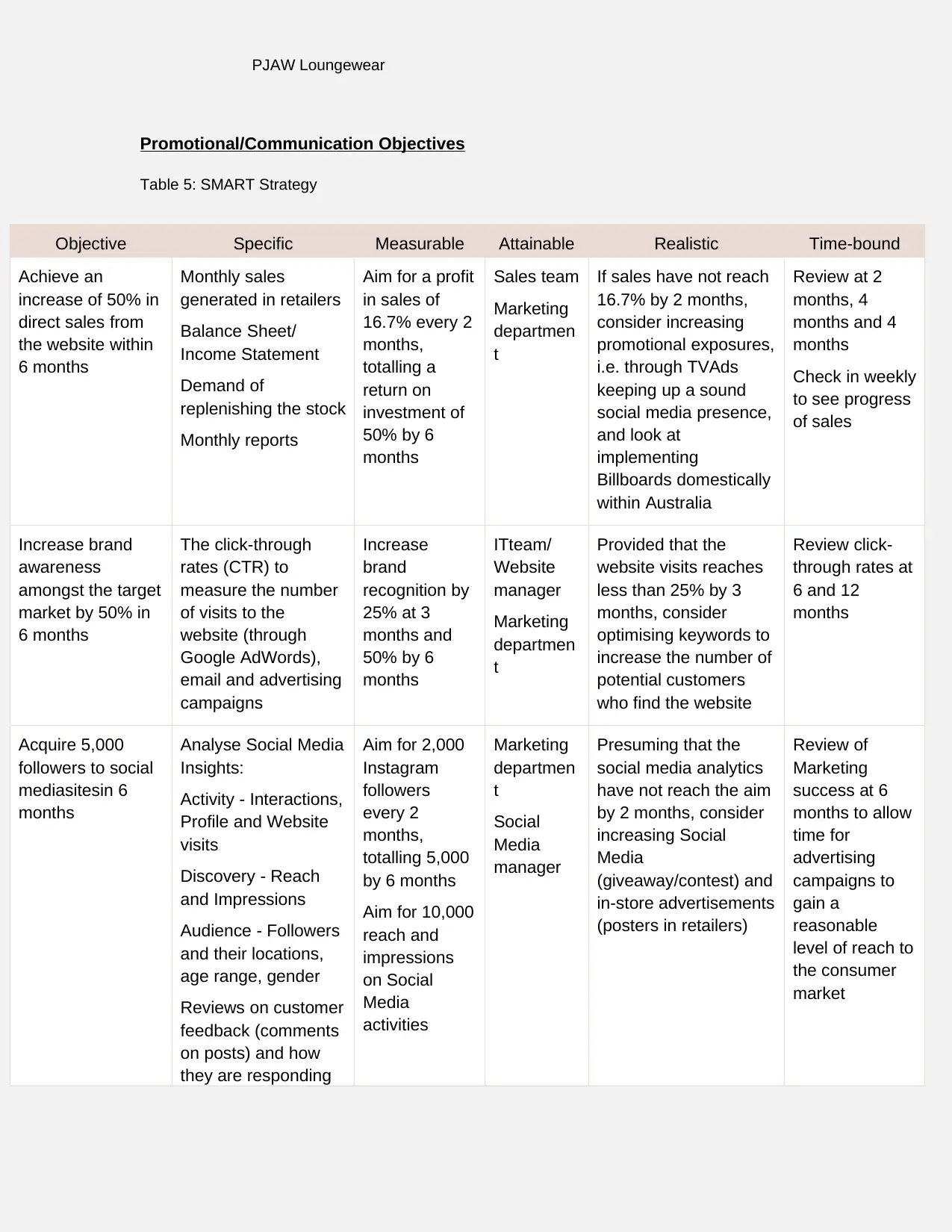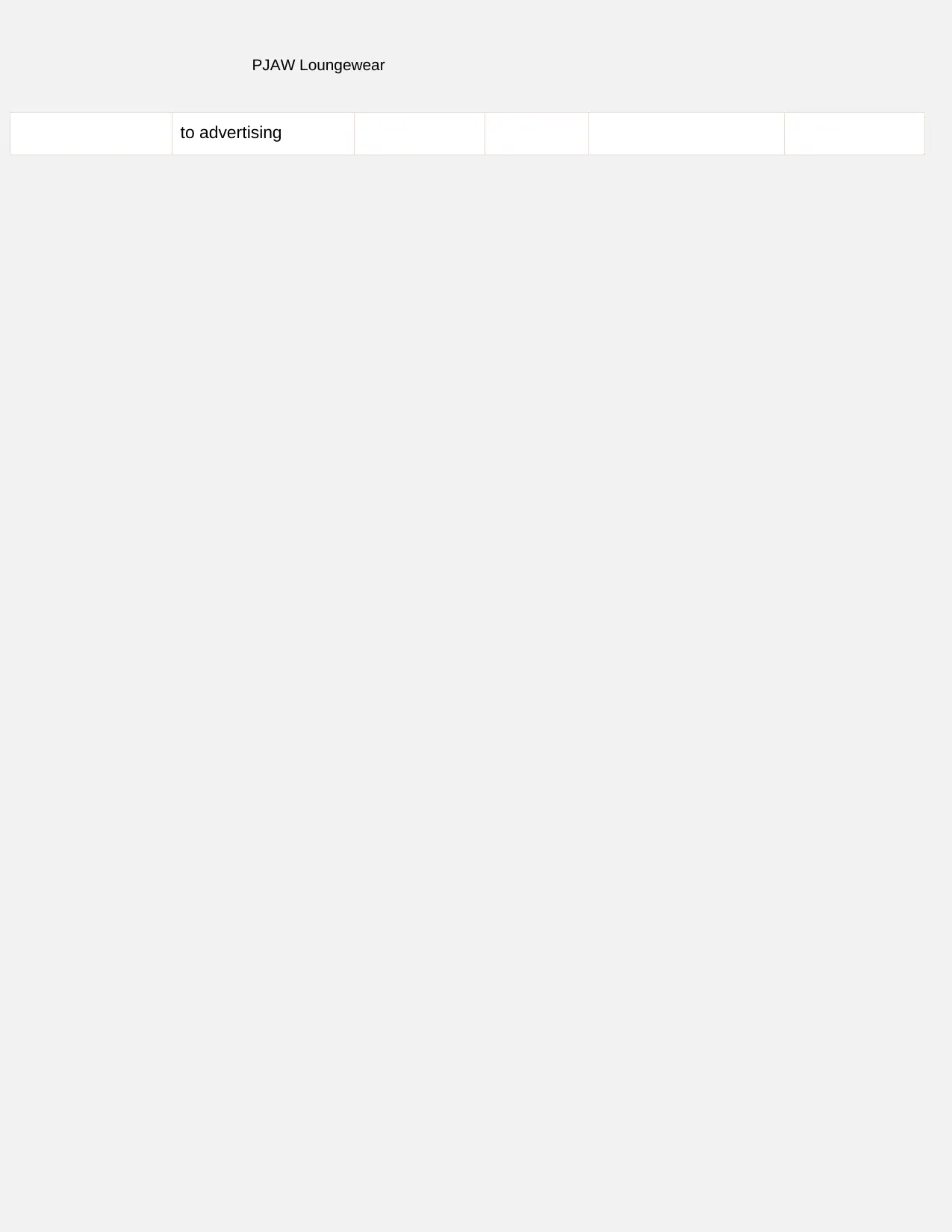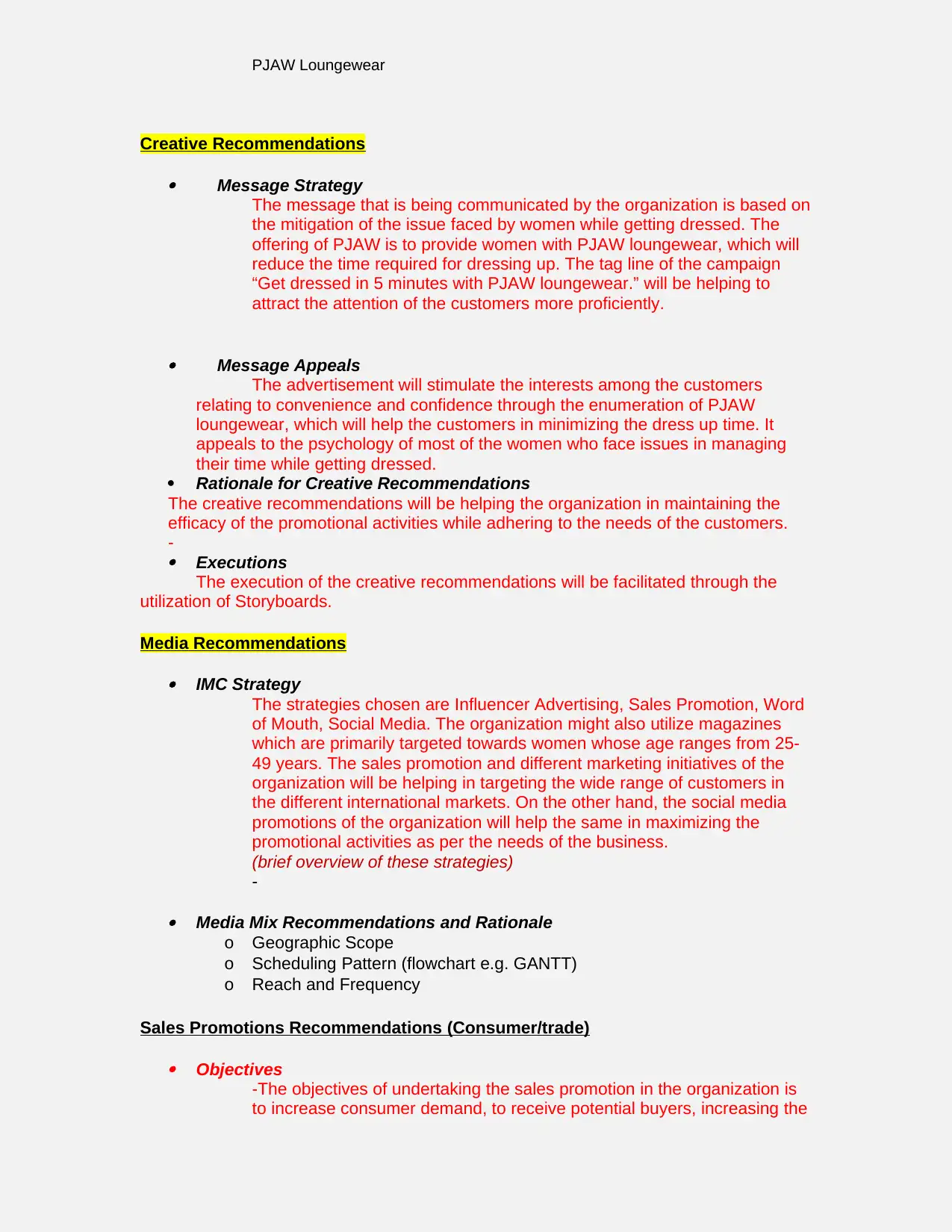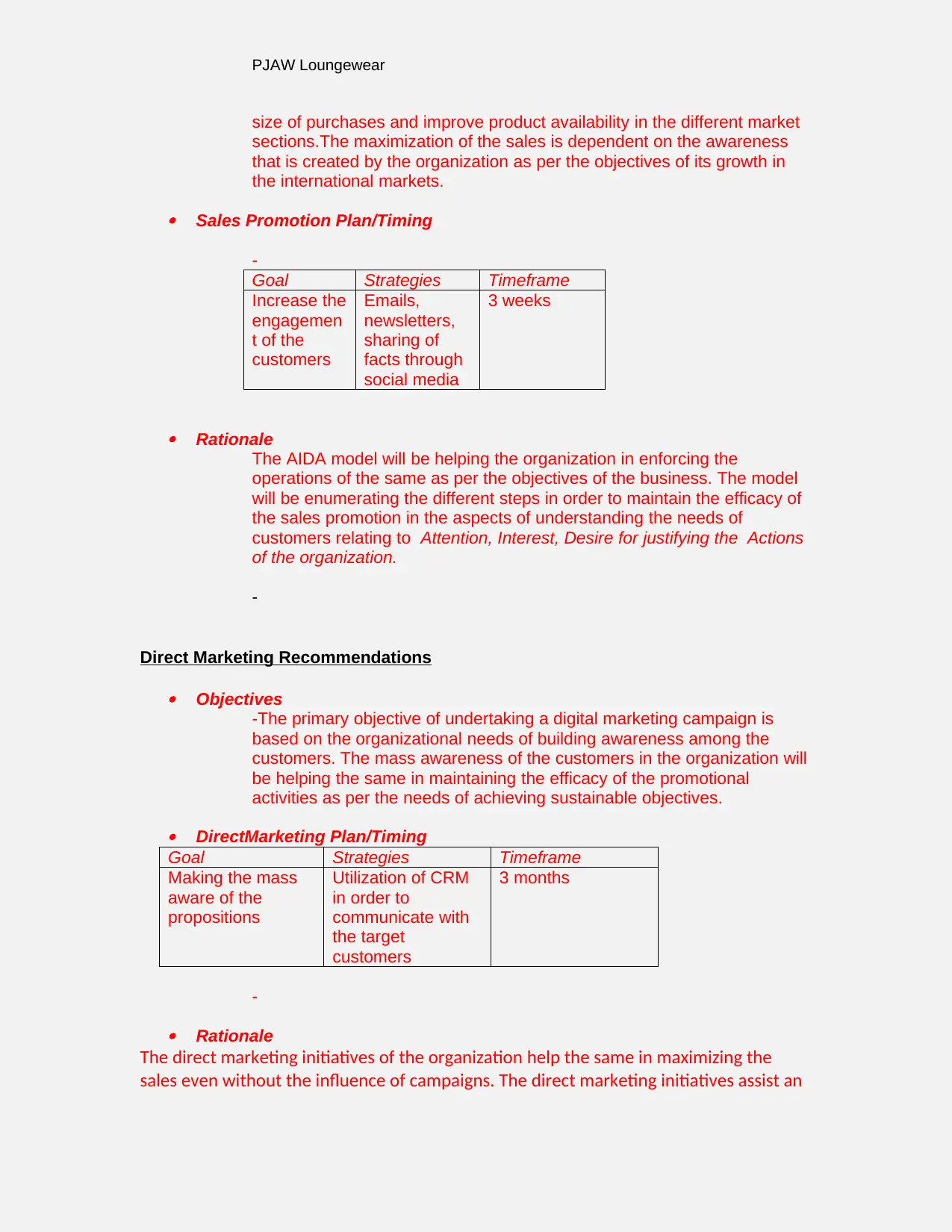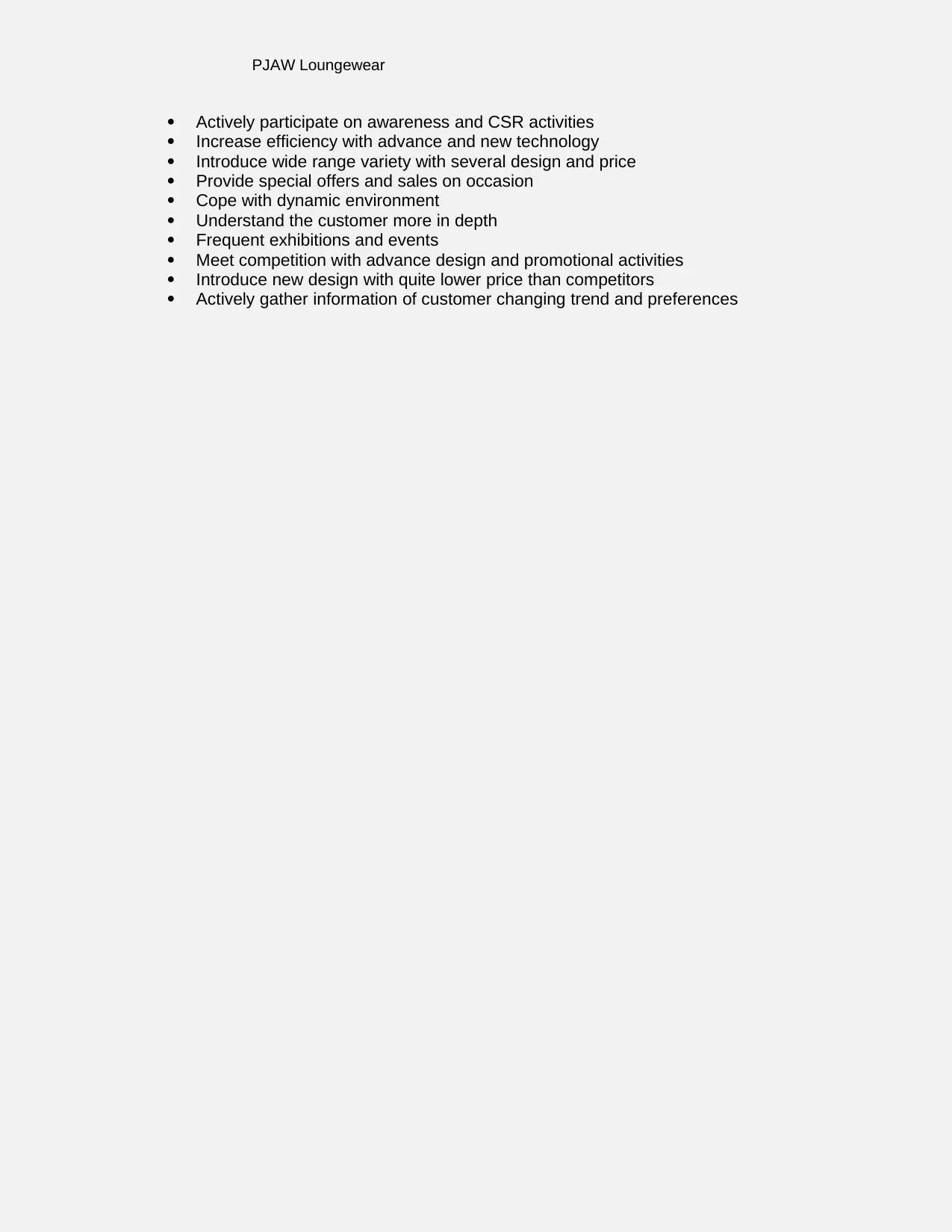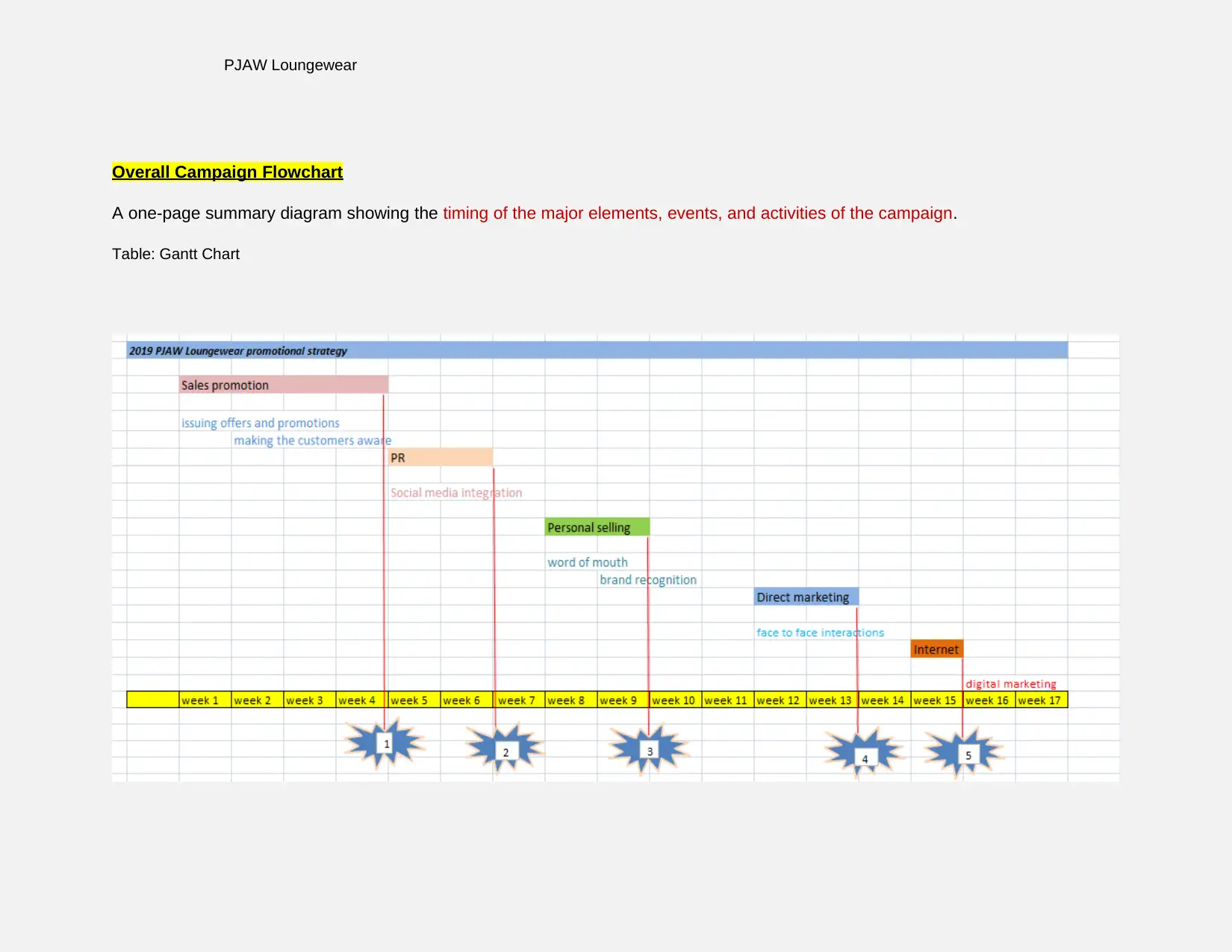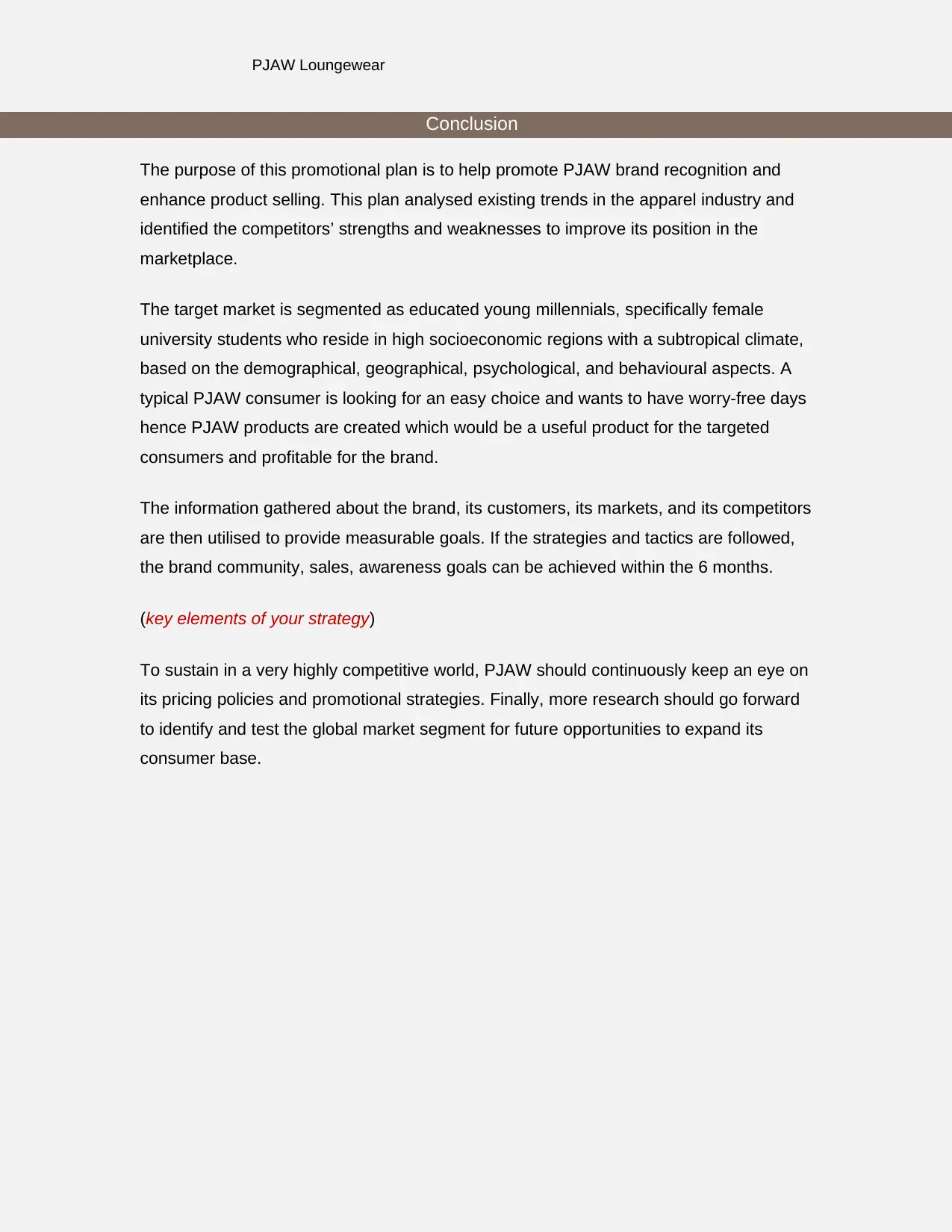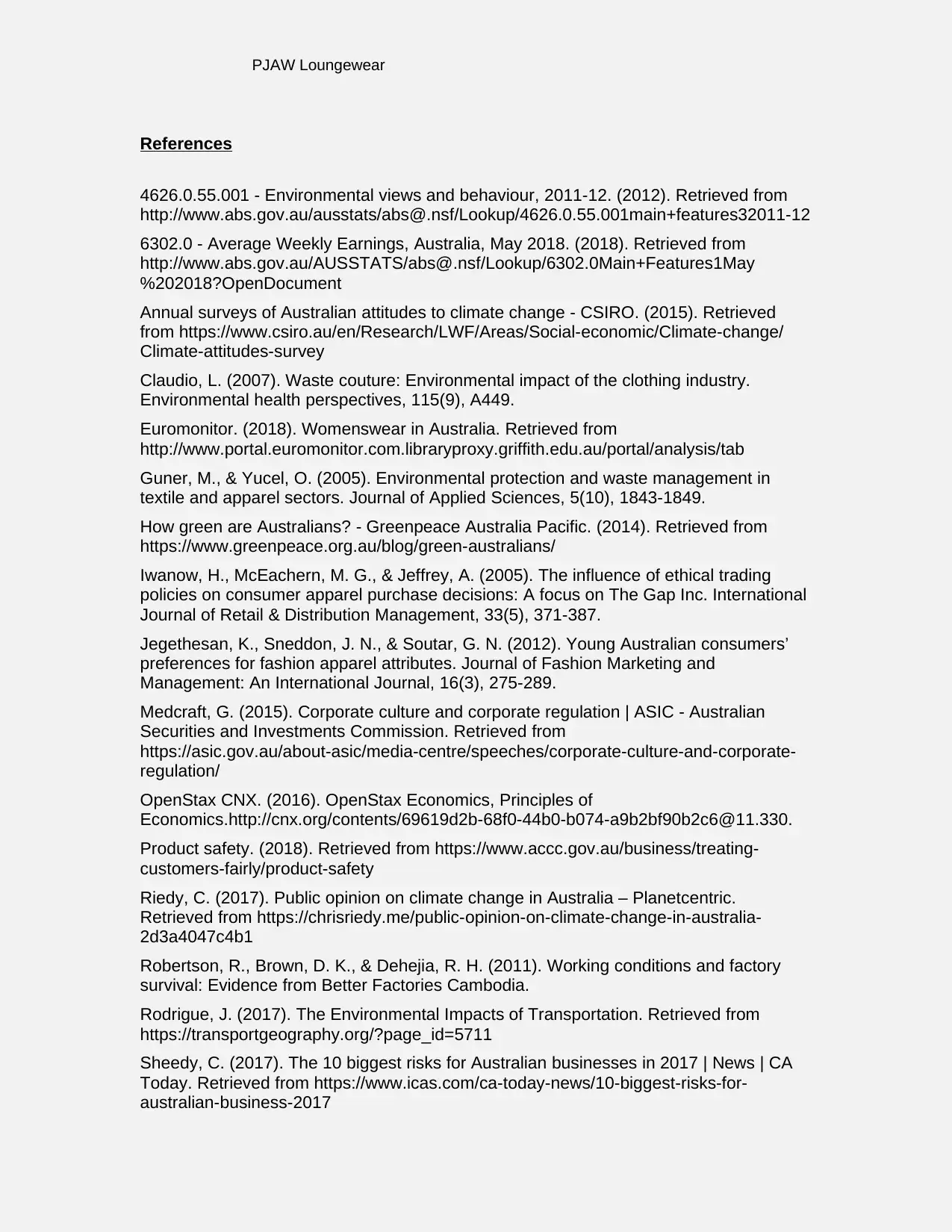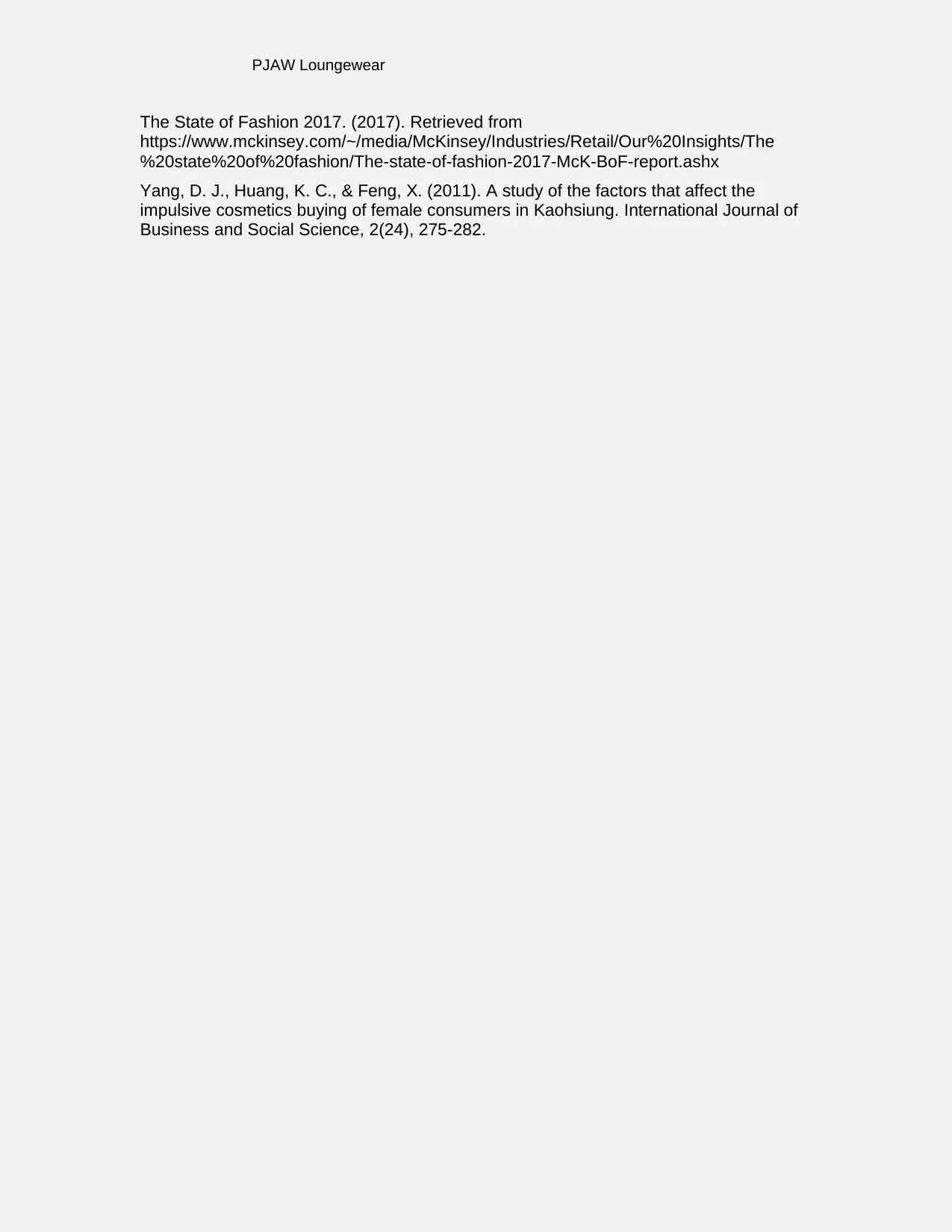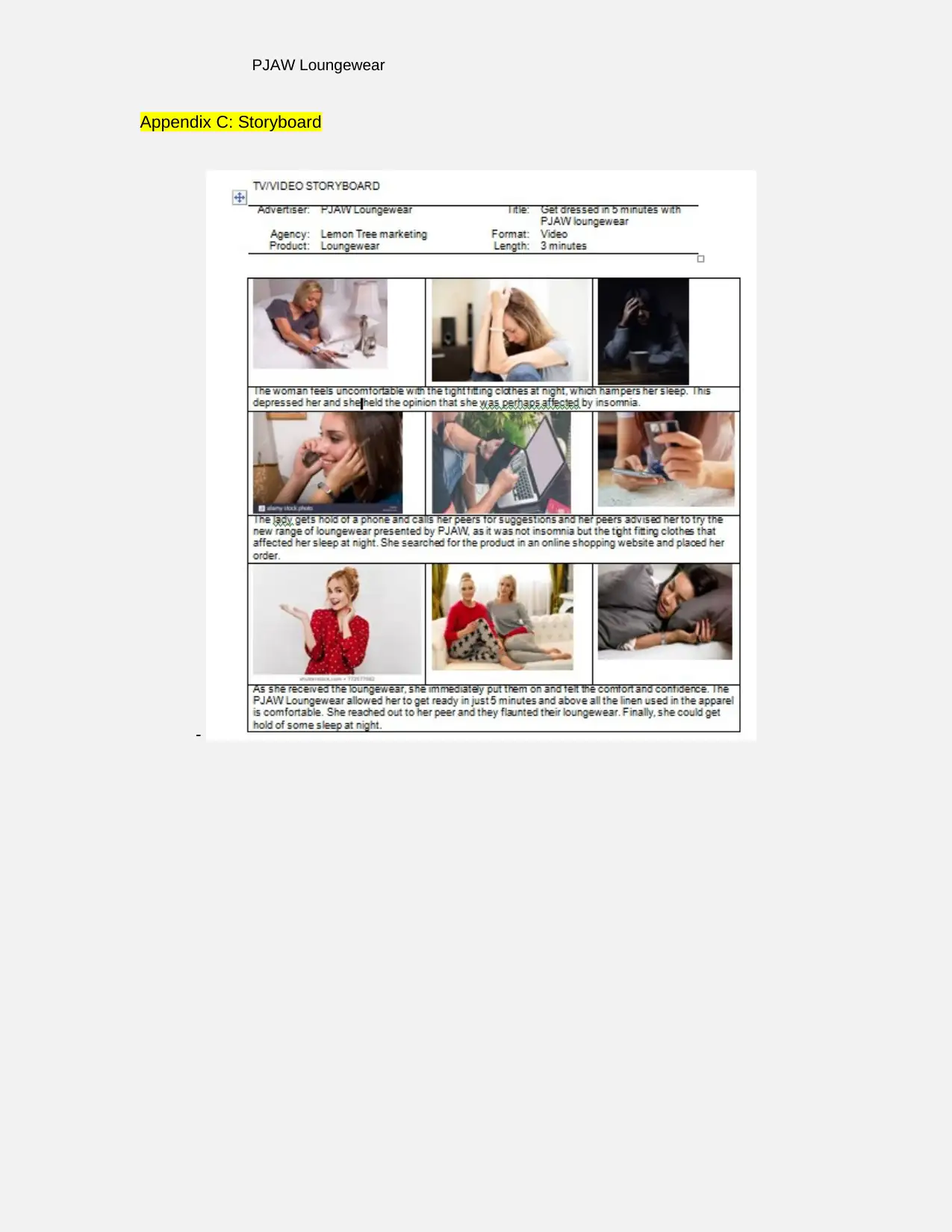This appears to be a summary of a promotional plan for PJAW Loungewear. The plan offers a structure for introducing PJAW to the market, using PESTLE analysis, competitor analysis, and SWOT analysis to understand the current situation of the apparel industry. The plan proposes expanding PJAW's social media presence, increasing traffic on the website and social media sites, and fostering two-way communication with customers. The primary target market is female university students aged 23 to 38. The campaign objectives include increasing online sales by 50%, achieving a 50% increase in brand awareness, and acquiring 5000 followers on social media sites within 6 months. The campaign slogan is “Get ready in 5 minutes with PJAW” / “From the sheets to the streets in 5 minutes.” Is there anything specific you would like to know more about?
![[object Object]](/_next/static/media/star-bottom.7253800d.svg)
![[object Object]](/_next/static/media/star-bottom.7253800d.svg)
